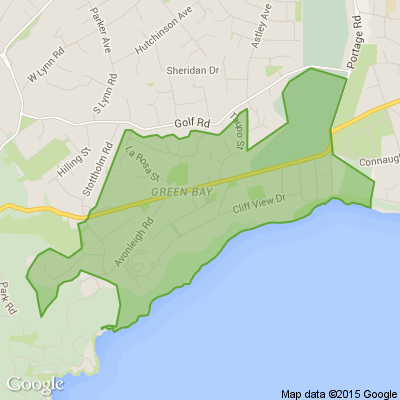WATERCARES' PLANS FOR TITIRANGI
Press release below from Titirangi Protection Group (TPG). If you care about this issue, the time for submissions is coming soon.
Media Release
Auckland, New Zealand, 13 July 2018
Goff's claim of ‘scrub and gorse’ is nonsense, say treatment plant protesters
Auckland’s endangered native bush will be destroyed by Watercare’s proposed Titirangi water treatment plant, two new reports reveal.
Seventy per cent of Watercare’s four-hectare treatment site has been described as "endangered forest ecosystem", seriously questioning Auckland Council's claims that the Titirangi forest is expendable.
Watercare originally tried to place its Water Treatment Plant (WTP) in Oratia but when that proposal was defeated by community protest Watercare was forced to shift its focus to Titirangi’s kauri regrowth forests.
"Mayor Phil Goff has described the site as 'mostly scrub and gorse', which is pure stuff and nonsense," says Belynda Groot from the Titirangi Protection Group, the community organisation trying to stop bulldozers moving into the kauri forest. "Two ecological impact reports pour cold water on the idea that nothing of value is going to be destroyed, and one of those reports is from Watercare itself.”
One of the environmental reports was commissioned by Watercare and conducted by Boffa Miskell, while an independent report was written by respected ecologist, Shona Myers. Both reports recognise the high ecological value of the Titirangi site.
According to the Boffa Miskell report: “Our vegetation assessment identifies that endangered or critically endangered forest ecosystem types cover more than 70% of the Project Site.”
The Myers report goes into further detail: “The site itself is representative of regenerating forest types including kauri, present in this part of the foothills. It contains threatened ecosystem types (regenerating kauri forest, broadleaved forest and kahikatea-swamp maire forest) and nationally and regionally threatened species. The site forms linkages and corridors for wildlife with adjoining regional parkland forest.”
The adjoining parkland mentioned by Myers is home to two of Auckland’s oldest kauri (Clarks and Bishop). The reports also reveal that the proposed WTP site forms the headwaters which flow in to the Waituna Stream and Little Muddy Creek, home to endangered native freshwater fish species such as īnanga and long-finned eel.
Belynda Groot, says: “In a recent interview Mayor Goff described the site as mostly scrub and gorse so we hope that in light of evidence from experts, he will reconsider his position. We know that Watercare has been giving politicians a customised tour of a part of the site with the least ecological value, so confusion is understandable.”
Groot says the Titirangi Protection Group understands the need for a new water treatment plant but questions whether Watercare can decimate significant stands of native bush and still claim to prioritise sustainability.
“They need to go back to the long list or come up with a more innovative solution that doesn’t require the destruction of native forest.”
Groot points out that Watercare’s plans for a Titirangi WTP might also fail on a business-case argument. “Watercare admits the Titirangi site is a lot smaller than ideal for the scope of the project.”
Groot says Auckland Council recently closed the Waitakere Ranges to help save kauri from the very serious threat posed by kauri dieback and implemented a targeted rate of $311m to tackle the problem.
“On one hand ratepayers are saving the Waitakere kauri, and on the other hand they want to chop them down. Clean water shouldn’t be at the cost of our precious native forests - there are other more viable and sustainable options.”
ENDS
For comment or interview please reply to this email or contact:
Belynda Groot - Titirangi Protection Group
021 0235 1166
belyndag10@gmail.com
Riddle Me This, Neighbours! Bet You Can’t Guess It!
Sometimes narrow, sometimes wide, wind or rain, I stay outside.
Even if there’s heat or snow, from house to house I will still go.
What am I?
Do you think you know the answer to our daily riddle? Don't spoil it for your neighbours! Simply 'Like' this post and we'll post the answer in the comments below at 2pm.
Want to stop seeing riddles in your newsfeed?
Head here and hover on the Following button on the top right of the page (and it will show Unfollow) and then click it. If it is giving you the option to Follow, then you've successfully unfollowed the Riddles page.

New lottery, new home
For only $15 a ticket, you could win this brand-new, fully furnished Jennian home located in Clarks Beach, Auckland.
This coastal town offers the perfect escape, just a short drive from the city.
Valued at over $1 million, this home features three bedrooms and generous open-plan kitchen, living, and dining area. It is waiting to be loved by its new owner.
Make this property your permanent residence, a holiday home, a rental, or simply sell it!
Get your tickets today at heartlottery.org.nz

What's your favourite recipe for courgettes?
Kia ora neighbours. If you've got a family recipe for courgettes, we'd love to see it and maybe publish it in our magazine. Send your recipe to mailbox@nzgardener.co.nz, and if we use it in the mag, you will receive a free copy of our January 2025 issue.











 Loading…
Loading…













